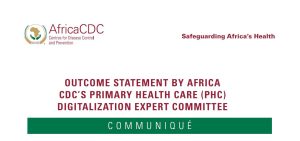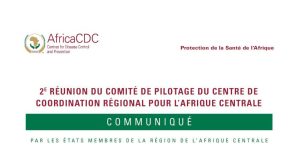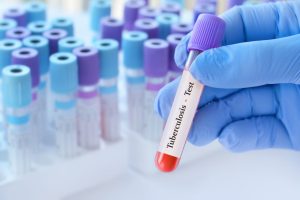The current mpox outbreak has exposed some serious gaps in Africa’s health systems—limited disease surveillance, testing delays and underfunded labs. But the problem doesn’t stop there. These weaknesses disrupt logistics and supply chains, slowing down the delivery of life-saving medical supplies when they’re needed most.
In the Democratic Republic of Congo, nearly a quarter of mpox samples are delayed getting to labs due to transportation bottlenecks, undermining timely diagnosis and response. For Africa CDC, this is a clear call to action: the continent needs faster, more innovative and more resilient supply chains—and it needs them now.
Building Better Systems Together
In Bishoftu, a quiet town near Addis Ababa, Africa CDC gathered key staff members and partners—like the WHO, UNICEF, the World Food Programme and the International Association of Public Health Logisticians—for a six-day deep dive into rethinking health supply chains. The mission? To finalise a strategy that ensures vaccines, diagnostics and other medical supplies get to the people who need them on time, every time.
From day one, the message was clear: supply chains are the backbone of public health. Whether it’s everyday healthcare or responding to emergencies, efficient logistics make all the difference. And Africa CDC is ready to lead the charge, starting with plans to expand its warehousing and streamline distribution.
What Needs Fixing?
One major challenge is fragmentation. With different countries operating under different policies, moving medical supplies across borders can be a logistical nightmare. Africa CDC’s strategy focuses on harmonising systems, aligning policies and fostering collaboration between governments, regions and private sector players to reduce inefficiencies.
Another key issue is dependency. Africa currently relies heavily on imported medical supplies, making it vulnerable to global disruptions. To fix this, Africa CDC is doubling down on local manufacturing, pooled procurement and regional hubs to ensure medical supplies are more accessible, affordable, and reliable.
Innovating for the Future
Technology is a big part of the solution. Blockchain, real-time data systems and other digital tools will be used to make inventory tracking, forecasting, and decision-making faster and more transparent. But innovation isn’t just about gadgets—it’s also about people. Africa CDC’s strategy includes training local professionals and creating centres of excellence to ensure long-term progress.
Sustainability is another key pillar. From using renewable energy to cutting waste with sustainable packaging, Africa CDC is committed to building supply chains that protect both public health and the planet.
A New Era for Health Logistics
Africa CDC’s plan is more than just a fix for today’s problems—it’s a blueprint for a future where every community has access to the health supplies it needs. By addressing systemic challenges, embracing innovation and putting sustainability front and centre, the agency is working to create a supply chain system that can handle the health emergencies of tomorrow.
The outcomes of the Bishoftu meeting mark a starting point. Backed by strong partnerships and bold initiatives, Africa’s public health leaders are building a smarter, more resilient health supply chain system—one poised to deliver lasting impact across the continent.
Senior procurement officer Tesfaye Hailemichael emphasised: “Effective supply chains thrive on collaboration. By harmonising efforts across borders, sectors and organisations, we can achieve what no single entity can do alone.” He added: “This framework and strategy mark a significant step forward in our collective efforts to create resilient health systems across Africa. By investing in partnerships, technology and harmonised processes, we are building a future where health commodities can reach those in need without delay.”







